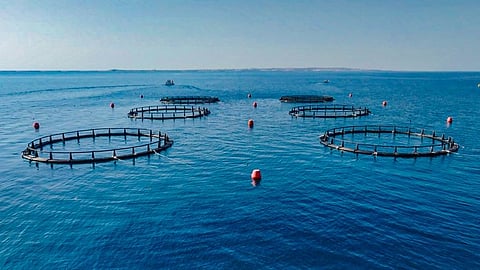New sea cage aquaculture project launched in Abu Dhabi
The Environment Agency – Abu Dhabi (EAD) has launched the first sea cages aquaculture project in the Emirate of Abu Dhabi. The project, located southeast of Delma Island within Al Dhafra Region, will facilitate scientific studies and research on culturing local fish species using floating aquaculture cage systems and develop environmental protocols for sustainable sea-based aquaculture in Abu Dhabi.
The EAD said the project will also contribute to relieving pressure on wild fisheries resources and support food security objectives in light of the increasing demand for seafood and encourage future investments in the sector.
The project will also be equipped with an advanced monitoring and data collection system utilising artificial intelligence, making it one of the first applications of this technology in the Middle East. It aims to implement solutions to manage aquaculture operations with high efficiency and will use environmental sensors to monitor marine water quality parameters, including temperature, pH, salinity, dissolved oxygen, turbidity, and ammonia levels.
This will also be augmented by underwater and surface cameras to track fish behaviour and feeding efficiency and a smart gateway for data transmission powered by solar panels.
Prior to establishing the project, the EAD implemented integrated hydrodynamic and environmental modelling to establish sustainable aquaculture development zones in the Al Dhafra Region. The modelling was carried out to determine the maximum biomass of fish that can be sustainably cultured within selected sites without impacting the environment.
The model also included components to study wave and particle movements and water quality to ensure the environmental sustainability of the selected sites.
The project comprises six floating sea cages capable of producing 100 tonnes of fish annually. Targeted fish species included various local high-value species such as gabit, safi, hamour, and sheri, and 168,000 safi arabi, 122,000 gabit, 100,000 shaam, and 90,000 shaari were released.
Dr Shaikha Salem Al Dhaheri, EAD Secretary-General, said that a survey was conducted to determine the most suitable location for the project, using hydrodynamic modelling and a comprehensive survey of various sites.


